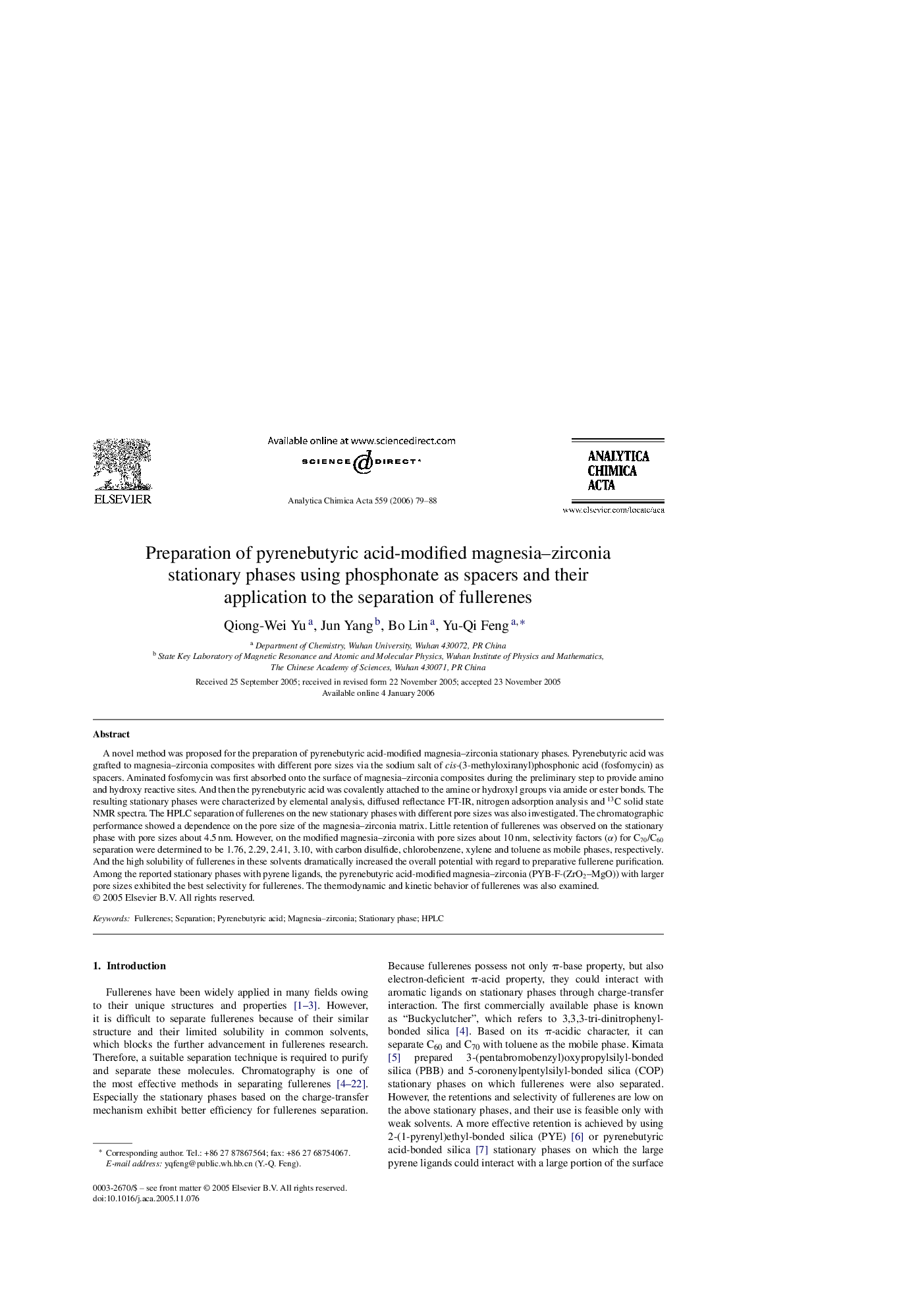| Article ID | Journal | Published Year | Pages | File Type |
|---|---|---|---|---|
| 1172496 | Analytica Chimica Acta | 2006 | 10 Pages |
A novel method was proposed for the preparation of pyrenebutyric acid-modified magnesia–zirconia stationary phases. Pyrenebutyric acid was grafted to magnesia–zirconia composites with different pore sizes via the sodium salt of cis-(3-methyloxiranyl)phosphonic acid (fosfomycin) as spacers. Aminated fosfomycin was first absorbed onto the surface of magnesia–zirconia composites during the preliminary step to provide amino and hydroxy reactive sites. And then the pyrenebutyric acid was covalently attached to the amine or hydroxyl groups via amide or ester bonds. The resulting stationary phases were characterized by elemental analysis, diffused reflectance FT-IR, nitrogen adsorption analysis and 13C solid state NMR spectra. The HPLC separation of fullerenes on the new stationary phases with different pore sizes was also investigated. The chromatographic performance showed a dependence on the pore size of the magnesia–zirconia matrix. Little retention of fullerenes was observed on the stationary phase with pore sizes about 4.5 nm. However, on the modified magnesia–zirconia with pore sizes about 10 nm, selectivity factors (α) for C70/C60 separation were determined to be 1.76, 2.29, 2.41, 3.10, with carbon disulfide, chlorobenzene, xylene and toluene as mobile phases, respectively. And the high solubility of fullerenes in these solvents dramatically increased the overall potential with regard to preparative fullerene purification. Among the reported stationary phases with pyrene ligands, the pyrenebutyric acid-modified magnesia–zirconia (PYB-F-(ZrO2–MgO)) with larger pore sizes exhibited the best selectivity for fullerenes. The thermodynamic and kinetic behavior of fullerenes was also examined.
